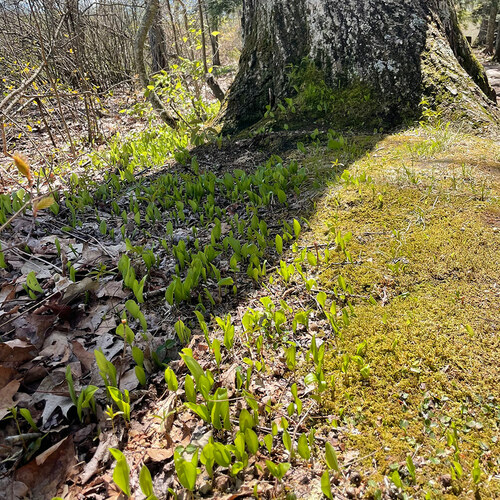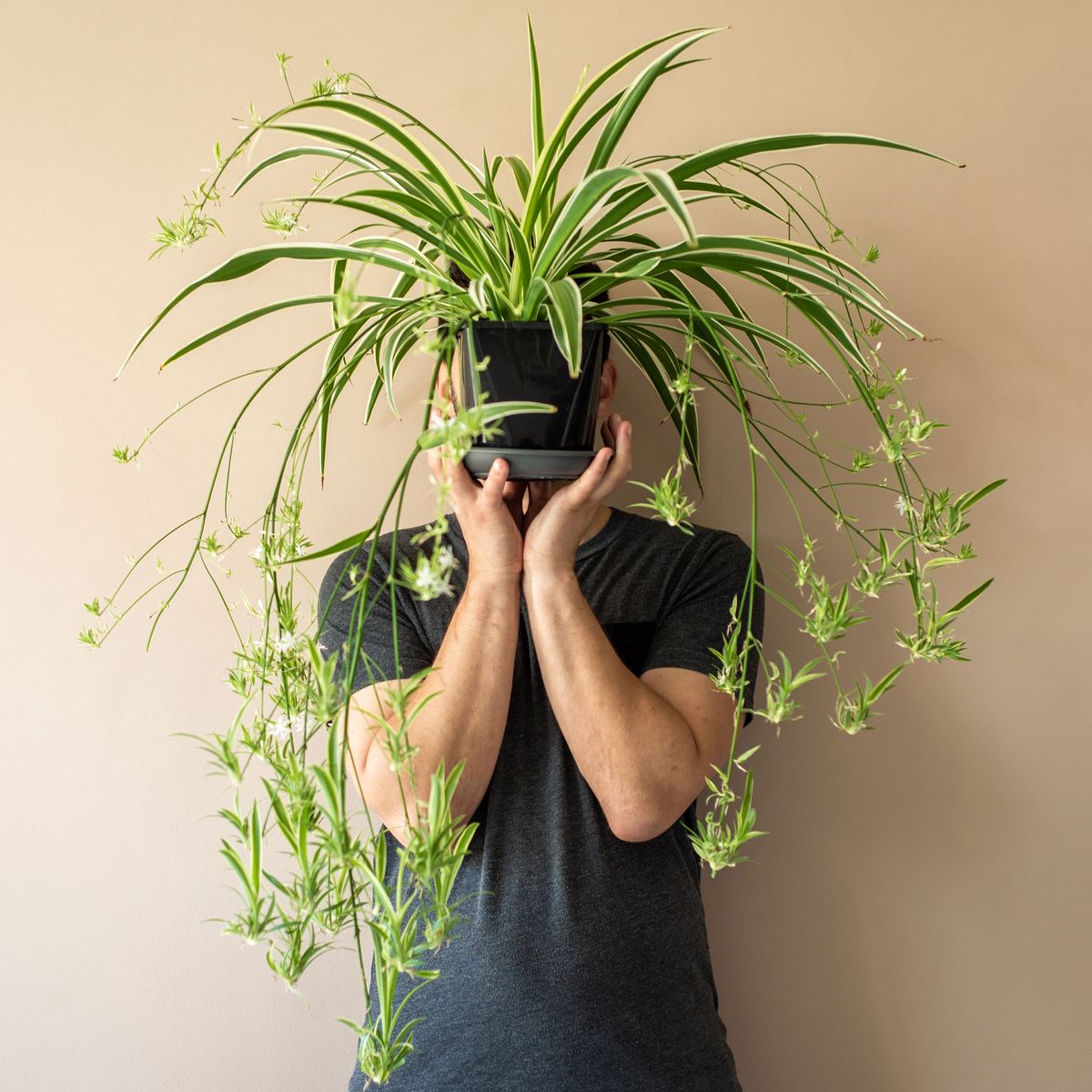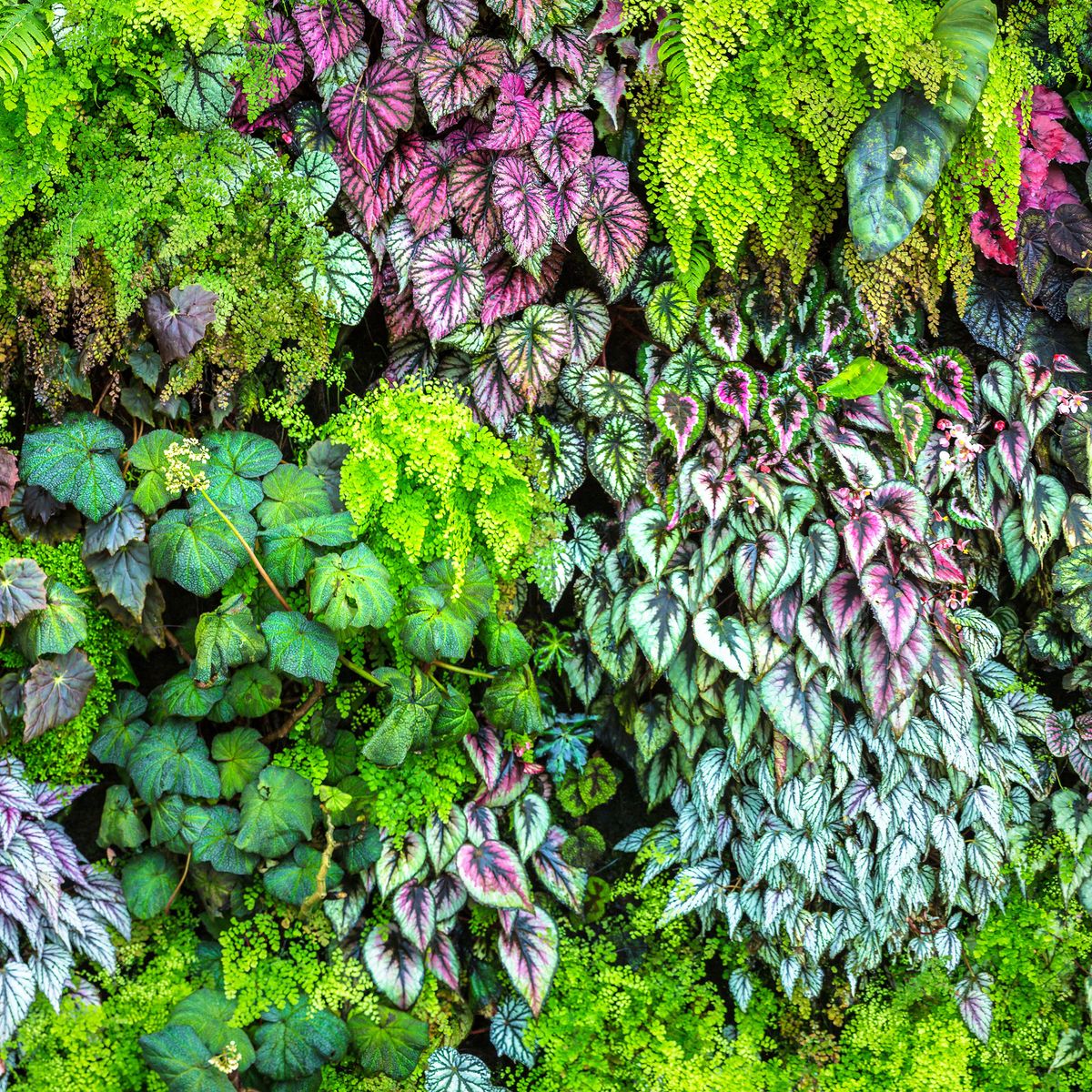Happy Monday GPODers!
Hope everyone had a beautiful weekend with lots of time spent in the garden. If not in the garden, I hope you at least had an opportunity to go outdoors and enjoy the sights and sounds of spring.
This time of year in Connecticut is the best time to go on hikes and do what I call “plant watching.” Just like bird watching, plant watching simply involves going into nature and observing. (Thankfully you don’t have to worry about sneaking up on or spooking the plants you’re watching.) From the tall trees towering overhead to the fuzzy moss growing on the side of log, just get up close and take in their beauty. No matter how long you’ve been living in an area, you might be surprised by the flora you find.
One of my favorite spots to go plant watching is Little Pond Boardwalk Trail in Litchfield, CT. It’s a quick 1.2 mile (1.9 km) loop on a relatively flat raised wooden walkway across wetlands. Given the time, you can easily make multiple loops and see something new each time around. Below are some photos from a recent trip when new foliage was just beginning to emerge.
 Foliage and flowers always get lots of love, but in winter and early spring you can appreciate the other elements of plants that make them so mesmerizing. This leaning tree—potentially a crack willow (Salix × fragilis)—is starting to sport some bright green leaves, but jagged bark is stealing the show.
Foliage and flowers always get lots of love, but in winter and early spring you can appreciate the other elements of plants that make them so mesmerizing. This leaning tree—potentially a crack willow (Salix × fragilis)—is starting to sport some bright green leaves, but jagged bark is stealing the show.
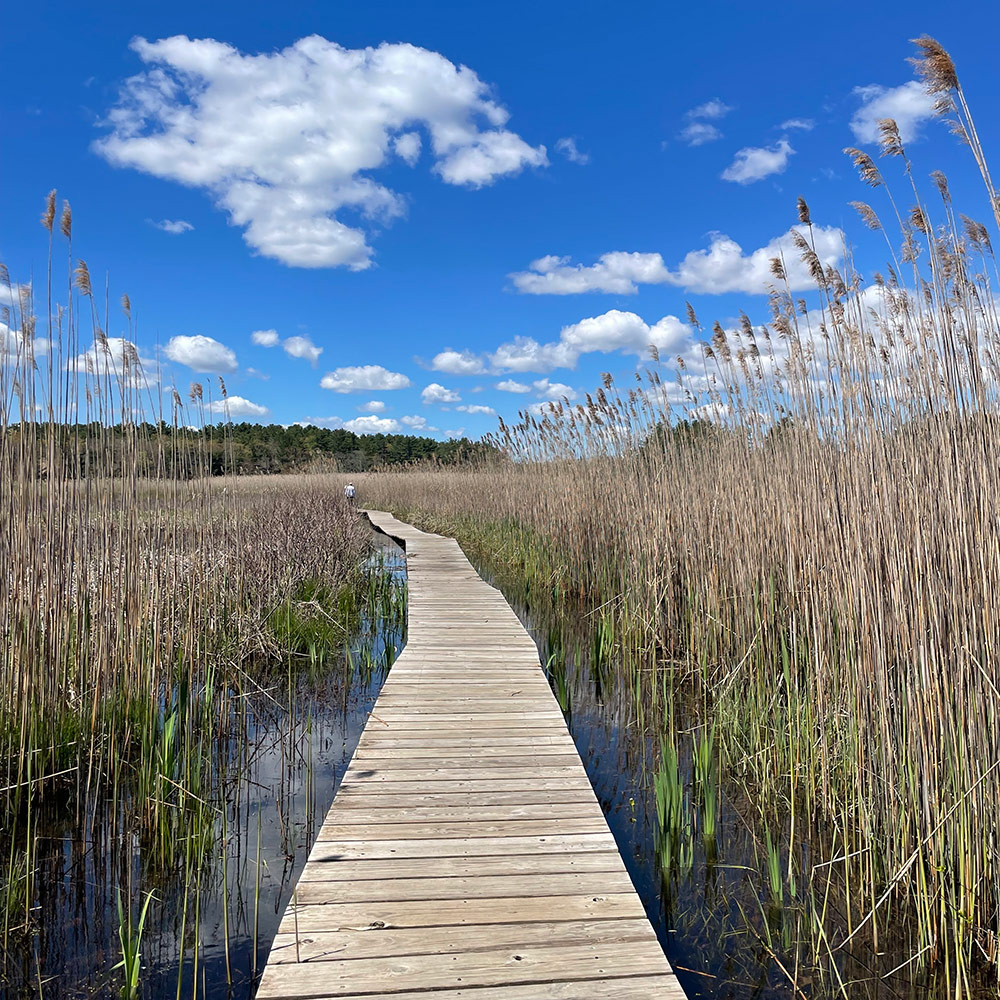 The sad reality is that many of our natural landscapes are overrun by invasive plants, and observing these is an equally important part of plant watching. While an impressive sight as you’re walking along the boardwalk, this common reed grass (Phragmites australis) is highly invasive and has taken over large swaths of these wetlands.
The sad reality is that many of our natural landscapes are overrun by invasive plants, and observing these is an equally important part of plant watching. While an impressive sight as you’re walking along the boardwalk, this common reed grass (Phragmites australis) is highly invasive and has taken over large swaths of these wetlands.
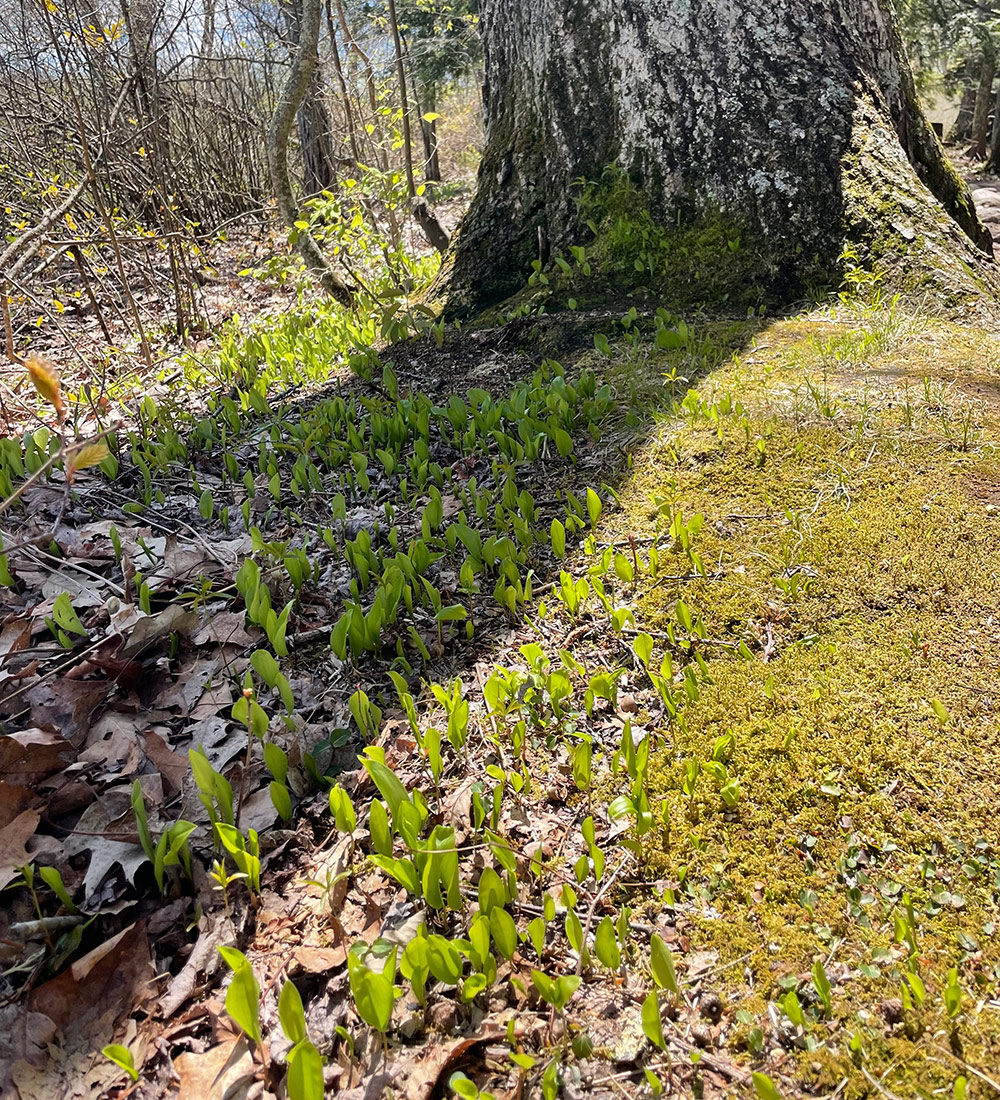 I missed these Canada mayflowers (Maianthemum canadense, Zones 3–8) emerging from the ground on my first loop of this trail but was lucky to catch them hiding in the shade on my second time around. An understory perennial native to Canada and the northeastern United States, this low-grower will produce tiny white flowers later in the season, but the tiny wisps of foliage were still a treat.
I missed these Canada mayflowers (Maianthemum canadense, Zones 3–8) emerging from the ground on my first loop of this trail but was lucky to catch them hiding in the shade on my second time around. An understory perennial native to Canada and the northeastern United States, this low-grower will produce tiny white flowers later in the season, but the tiny wisps of foliage were still a treat.
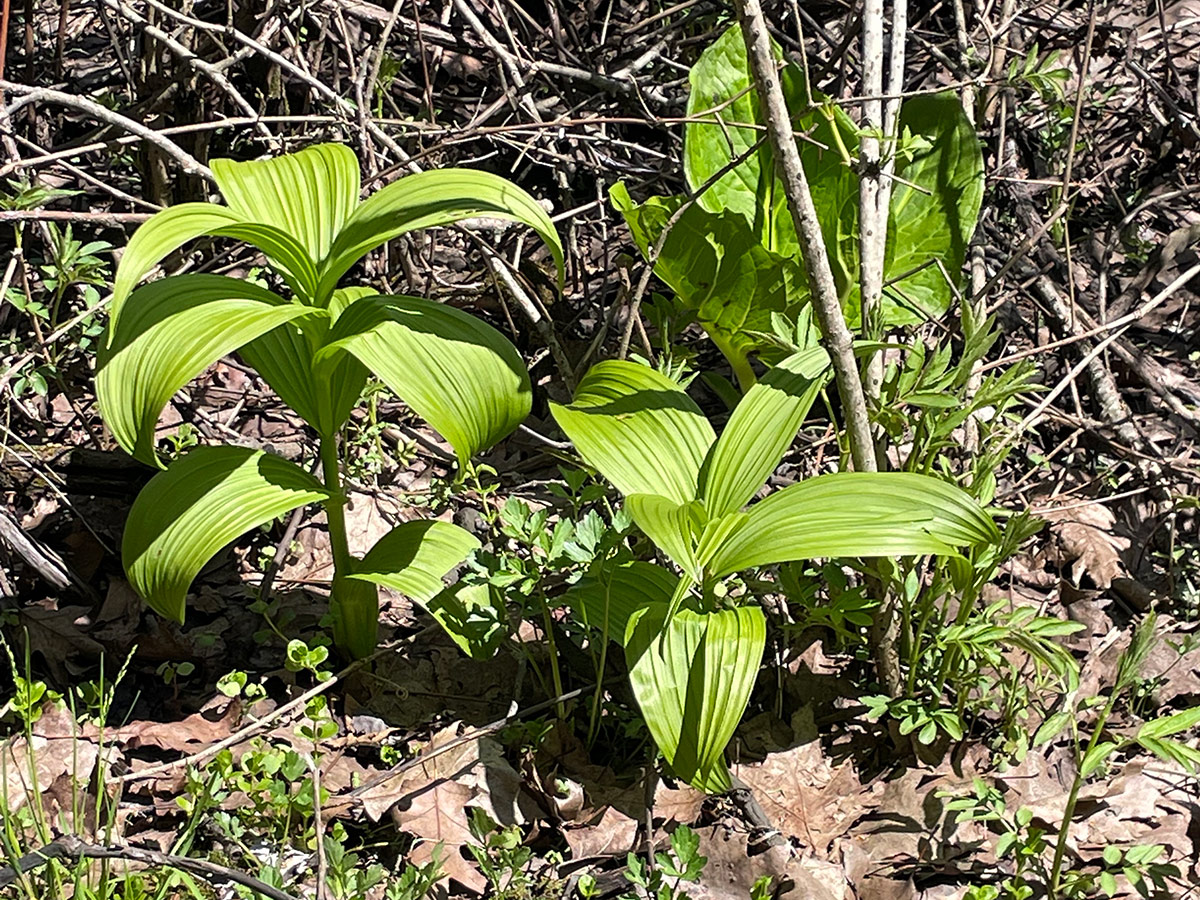 This next native is beautiful, but it bites back. False hellebore (Veratrum viride, Zones 3–7) has a laundry list of common names, but no matter what it goes by you should be wary of its toxic properties. Several indigenous American and Canadian communities have traditional medicinal uses for the plant, but a novice should not be tempted to experiment. Ingesting even a small amount of false hellebore can be lethal due to steroidal alkaloids found in the roots, shoots, and rhizomes.
This next native is beautiful, but it bites back. False hellebore (Veratrum viride, Zones 3–7) has a laundry list of common names, but no matter what it goes by you should be wary of its toxic properties. Several indigenous American and Canadian communities have traditional medicinal uses for the plant, but a novice should not be tempted to experiment. Ingesting even a small amount of false hellebore can be lethal due to steroidal alkaloids found in the roots, shoots, and rhizomes.
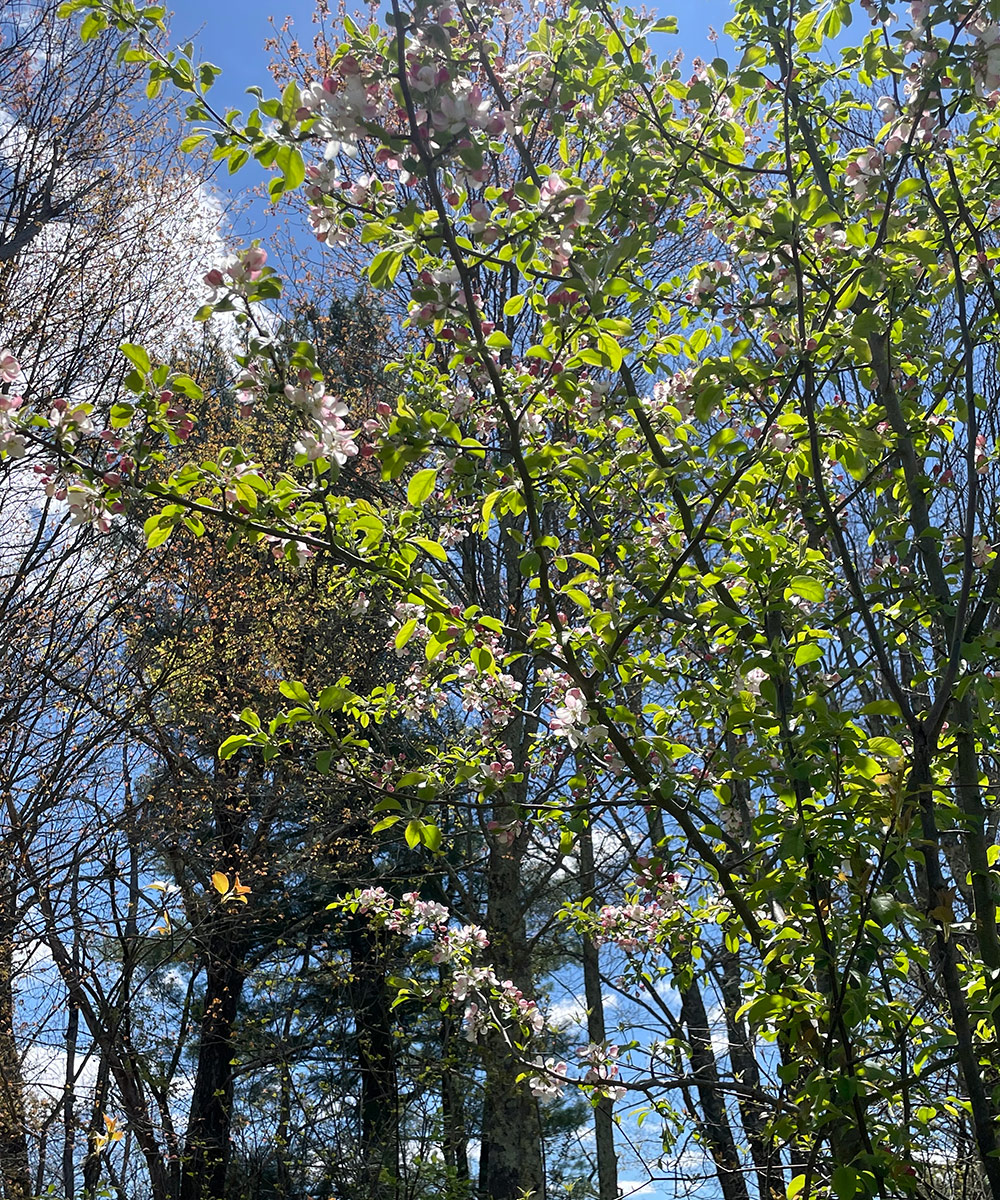 On a much lighter and brighter note, the beautiful first blossoms of a crabapple tree (Malus spp. and cvs., Zones 3–9) are a surefire sign that spring is in the air.
On a much lighter and brighter note, the beautiful first blossoms of a crabapple tree (Malus spp. and cvs., Zones 3–9) are a surefire sign that spring is in the air.

And once the hike is over, plant watching doesn’t need to end! A stop at a local café included a sighting of the classic ‘Emerald Green’ arborvitae (Thuja occidentalis ‘Emerald Green’) and flopping daffodils.
Have you gone plant watching yet this spring? We’d love to see what’s emerging and growing around you. If you have a chance this week, step outside your garden and see what inspiration you can get from plants growing in nature.
Have a garden you’d like to share?
Have photos to share? We’d love to see your garden, a particular collection of plants you love, or a wonderful garden you had the chance to visit!
To submit, send 5-10 photos to [email protected] along with some information about the plants in the pictures and where you took the photos. We’d love to hear where you are located, how long you’ve been gardening, successes you are proud of, failures you learned from, hopes for the future, favorite plants, or funny stories from your garden.
Have a mobile phone? Tag your photos on Facebook, Instagram or Twitter with #FineGardening!
Do you receive the GPOD by email yet? Sign up here.

